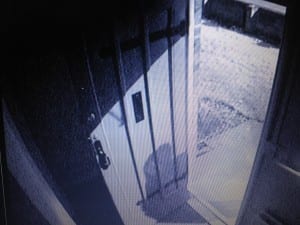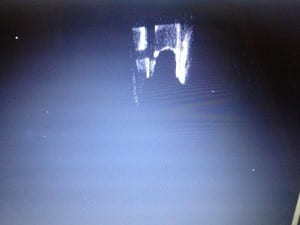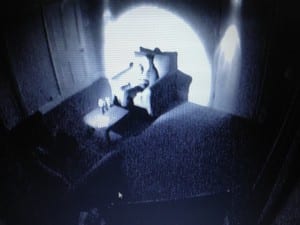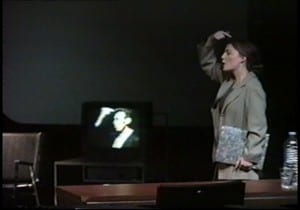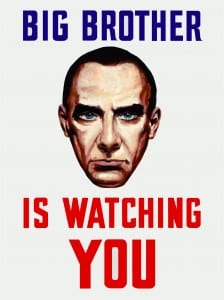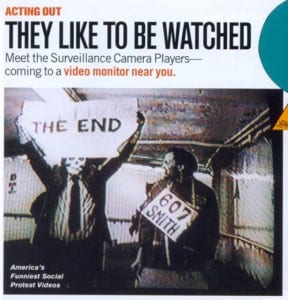Well it’s all over! I can comfortably say not one have us has ever experienced anything quite like the past few months. Site Specific has not only given us and hopefully the audience members an experience to remember, it’s opened up Drama as a subject even further for us as students.
For the CCTV group it’s been harder than we first predicted, we’ve gone from holding placards to the cameras, leaving messages around the house, treasure hunts, to finally finding something worthy of a performance. Instead of focusing on relaying messages to the audiences we decided to show the house in a different context, at night.
Going back to my first blog post, I reeled off the ideas and emotions that came to mind when I first entered the house on West Parade. When looking back now a few of my ideas were trialed and tested and eventually used in the final performances. Our group always wanted to use the CCTV to our advantage, for example whether we informed the audience they were being watched or to leave them to figure it out for themselves.
When the rehearsal process progressed so did our ideas, with the final piece being called Safe House, it developed our ideas for the CCTV room even further. Joining the CCTV group and Hayliegh in the Reception, we were the Agents within the Safe House ensuring their visit goes smoothly. With Hayliegh welcoming the two audience members to the house for their induction in the reception, she listed some rules and regulations within the house. There was then a phone call between me and the downstairs phone on speaker, asking the audience members questions about their choice of clothing, interrogating them as to whether they considered their clothing as a disguise when making way to the Safe House and so on and so forth.
On my performance evenings of the 1st and 2nd of May, improvisation was done during the performances mainly through the phone calls identifying individual visual aspects of each audience member. Identifying personal aspects ensured they knew they were being watched which clearly changed their body language straight away. Being in the Safe House for two performance evenings meant I had the opportunity to see several audience members explore the house and how each individual reacted differently to our weeks of work. When the audience members came across our room towards the end of their time in the house, several entered bewildered discussing their individual experiences, some came in quiet, calm and collected, others even tried interacting with me trying to provoke a reaction. The performance evenings were very exciting and nerve wrecking giving the improvisational aspects, it was fantastic seeing the reactions some audience members had when being asked personal questions about their appearance, watching their eyes race around the room before seeing the camera. One particular audience member entered the CCTV room at the end and were astonished they had been watching throughout the whole piece immediately saying in shock “Oh my goodness they’ve been watching us the whole time!?”
Choosing to leave the CCTV on for the audience members worked out really well, flipping the whole evening in their eyes on it’s head it was fantastic seeing their reaction, after watching this performance for the past sixty minutes and realising they were a part of it and that contradiction of all the performers now being unaware they were being watched. Although ours was an installation piece I was pleased we had the chance to see for ourselves the reaction the audiences had to our work. I can’t quite put my finger on it but there was something magical about watching the audience’s reaction to seeing the house as a whole on the CCTV screen.
Going back to the audience being a part of the performance the Living Room was probably the only room in which the audience had chance to be a performer knowingly. Some audience members literally sat with the performers for the full ten minutes, which was frustrating in that they didn’t explore the room they had put so much effort into. However the realisation set in that they may be trying to be a part of that performance as one audience member in particular sat still with them for the full ten minutes which could have been for that reason or maybe just the anxious, vulnerability they were feeling. The only sad aspect to the performance evenings was not being able to have a feedback session with the audience members afterwards to understand what was going through their minds and also what they took from each individual performance and if it was what we set out to accomplish or something totally different.
